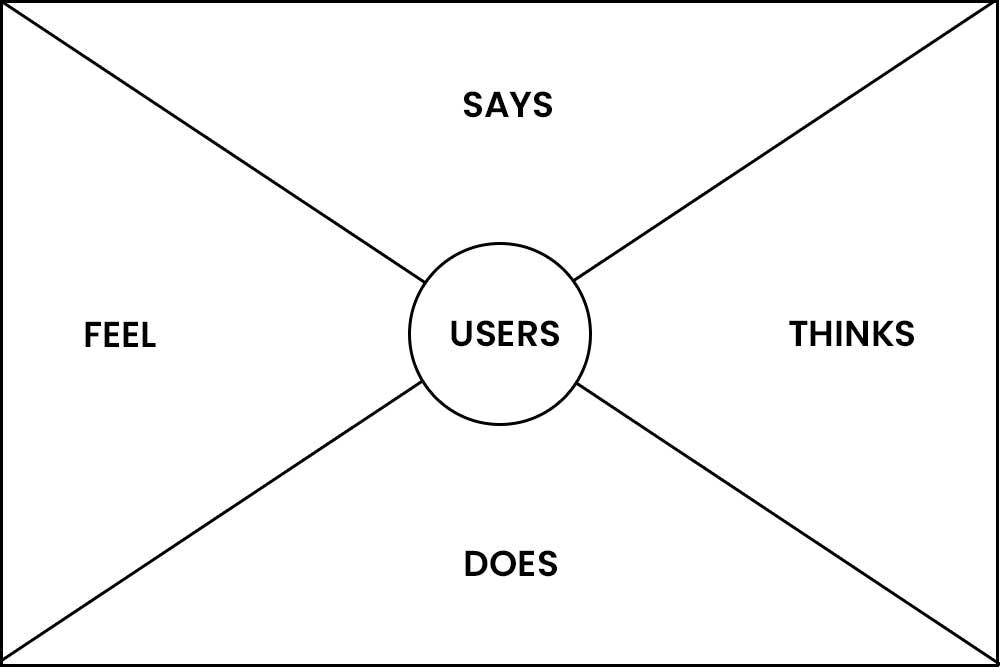Empathy mapping is a type of qualitative research technique that involves interviewing people to better understand their needs. It is used to identify customer needs and to generate new product ideas. It differs from other types of market research by focusing on understanding customers.
What is the goal of an empathy map?
The goal of an empathy map is to help a person understand the perspective of the other person. It helps identify and understand new or different perspectives. An empathy map can be used as a tool for understanding where the other person is coming from, how they might feel about a particular situation, and what they have done to try to solve it.
The process of empathy mapping?
An empathy map is a process that identifies difficulties faced by users of a product or service, and considers how those difficulties might be addressed. The map consists of four quadrants labeled “problems,” “efforts,” “solutions” and “perspectives” with each detail in the map represented as an individual bubble on the map.
How does empathy mapping differ from other types of market research?
Empathy mapping has been used as the gold standard of marketing research for over 35 years and is used by all of the top Fortune 500 companies.
It’s a method of understanding the perspective of customers and prospects, and it presents an opportunity to create more value for them by designing products and services that meet their needs.
The goal is to understand who customers are, what they’re looking for, what drives them, and why they make decisions.
Through interviews with customers, along with observation and analysis of both the customer’s environment and how they react to different stimuli, we can gain insights into how we can improve our products or service offerings to better fit their needs.
What are the benefits of empathy mapping?
Empathy mapping benefits in understanding the deep feeling of an individual by exploring the relationships, feelings, and emotions. It is one of the best ways to get in touch with people and find out their pain points.
This tool helps to understand what’s going on in people’s minds by getting into their shoes. It allows you to understand why they feel a certain way and how you can improve your products accordingly.
The benefits of empathy mapping are plenty. For example, it allows you to know why customers are buying other products; it helps to understand what’s really happening behind the scenes; it provides insights into competitor strategies; it gives you better insight into customer behaviors – these are just some of them.
What are the limitations of empathy mapping?
Empathy mapping has been critiqued for lacking in rigor when it comes to identifying participants, for example by using people that are not representative of the intended user-base or by relying on assumptions about that user.
This is an issue because it is essential for empathy maps to be able to represent the intended target audience, in order to create a product which truly resonates with their needs and desires.
Companies who want to make authentic products need to use empathy mapping with care. They need to make sure they are drawing in their appropriate users in order to get the right information about what they want and feel.
Who should be involved in empathy mapping?
Empathy mapping is a method of collecting feedback in order to understand what people think and feel about a particular topic. It can be used in the design process to help people better understand the needs of their audience.
There are various ways that this can be done, but primarily it is best to involve the entire company when possible. This ensures that all perspectives are heard and considered, which can lead to more user-centric designs.
This method is primarily used by UX designers or User Researchers who want to create more empathetic designs for their company’s digital products or services.
so, It’s important to involve people from all departments of an organization, such as marketing, design, and development to be able to get a complete overview of what can be improved. This is achieved by mapping out the problems and solutions. Empathy Mapping is an effective technique for achieving team understanding and alignment on product objectives.
How does an empathy map help a team?
The empathy map is a tool used by many practitioners for designing solutions, communicating with stakeholders, and understanding stakeholders’ perspectives on problems or pain points. It can be used as a design rationale for a design solution, as a communication tool among members of a multidisciplinary team, and as an assessment to understand stakeholders’ perspectives on problems or pain points.
An empathy map is a visual map where the team member has to identify with different feelings, emotions, needs, goals, etc. of the target audience they are designing for.
It helps the team to empathize with their users and understand their problems in order to design better products or services for them. It also helps the team understand what motivates their users and what makes them tick.
What are the steps to take in order to create an empathy map?
Empathy maps are used to break down the job of designing for people. They help us to gain a deep understanding of what people need and how they might go about achieving it. They have been used in the design world for a while now but have just recently been introduced into the marketing world.
In order to create an empathy map, there are five steps that need to be taken:

1) Define your user
In order to identify the needs of a user, the empathy map starts with defining the user. It usually entails identifying their gender, age, occupation, interests, and other demographics. User defined by asking them questions about their needs and preferences.
2) Examine their environment
Empathy mapping requires an understanding of the person’s environment and how they interact with their surroundings. They can involve the exercise called Douglas, but this technique can be applied to real-life scenarios too. It is the exercise where we understand how he interacts with his surroundings when he wakes up in the morning. First we start off at his front door in order to observe his immediate environment when he opens it up in the morning.
For instance, when building an app for a user with diabetes, one would need to find out what is important for this person. What does he care about? Does he have any frustrations about his current experience? How does he want to be treated? These are all questions that need answers in order to empathize with the user and create a better app.
3) Identify their feelings
Identifying feelings is a process in which an individual can identify feelings by grouping them in different ways.
An individual will have to choose the feeling they are trying to identify, then place it into one of three categories: positive, negative, or ambiguous.
This classification helps the individual understand how many emotions they are feeling at once. Empathy mapping is beneficial to individuals who are overwhelmed with emotions and do not know how to handle them. It allows them to have a better understanding of what they are feeling and why it is happening.
4) Explore their needs
Empathy mapping is a technique that is used in order to identify the needs and wants of a specific group of people.
To do this, you ask the people what they need and then map out each person’s comments in a diagram.
This is done by drawing circles that represent different main topics of interest. You can also use lines to connect them together to show how they relate to one another. The final result of this technique is a visual representation of what the people’s needs are and how they feel about them.
5) Generate ideas
After following all above process, A person starts by sitting in front of a blank page and thinking about all he/she saw.
The next step is to write down everything that comes to mind, no matter how silly it may seem, while following one of these two methods:
1) Write down everything from their own point of view
2) Write from the point of view of the people they have been trying to understand.
In the last step, they try combining all these ideas together in order to create a more comprehensive plan on what they should do next.
Who should use empathy mapping?
A marketer should use empathy mapping for understanding the point of view of the customer. It is used for finding out what people want to buy or what they need more of in order to make them happy after they buy something.
Empathy mapping is a technique that helps us to connect with the people we want to serve.
Companies who wants to serve their customers better, product managers who want to get insights from their users and customer care teams can use empathy mapping.





